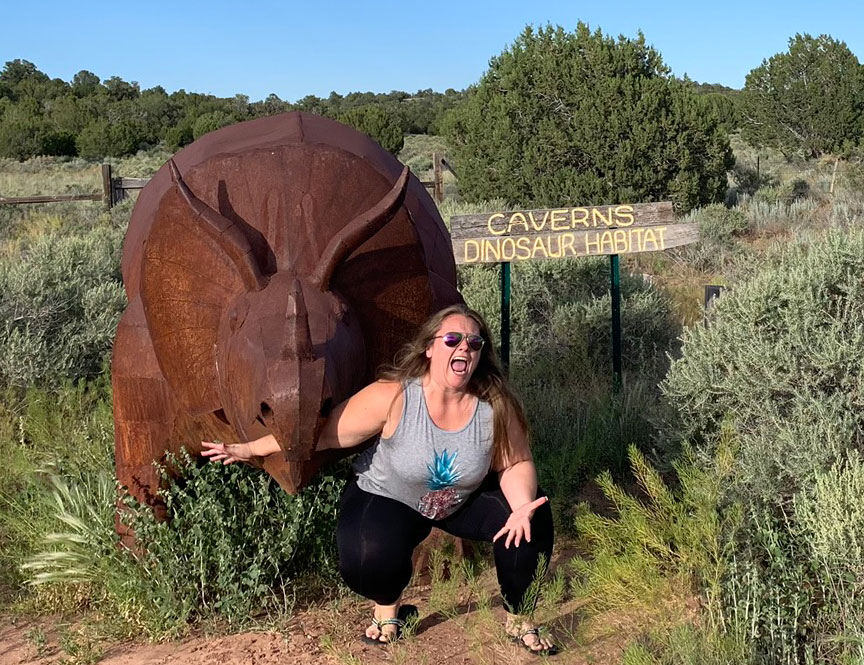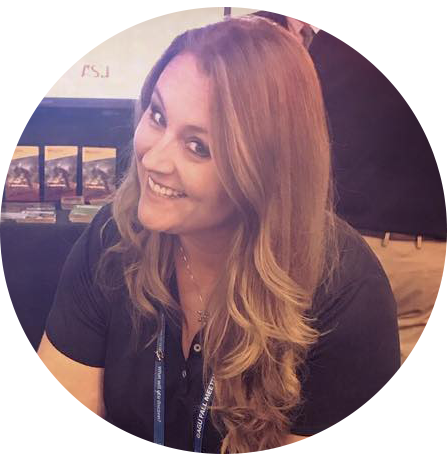
Jessica Swann
Program Architect - Communities of Practice - Arizona State University
Fairborn High School
Wright State University
Secondary Science Education
Grand Canyon University
Instructional Technology

My grandmother was an avid fan of nature documentaries, and something about those shows rubbed off on me.
My passion for space and dinosaurs started at a very young age. I suppose I thought I would search for dinosaurs on other planets. I read all the books and encyclopedias (pre-internet era) on both topics and read them again, always intrigued at how little we actually knew.
I always wanted to know more!
At Infiniscope, We create digital learning experiences rich with inquiry, immersion, and interaction that engage and inspire. We develop digital teaching networks that empower teachers to adopt, adapt, and advance education innovation. And we establish digital evaluation strategies that measure and nurture curiosity, persistence, and scientific reasoning.
The NASA SCoPE team is creating a community of practice (the CoP in SCoPE) to better connect these digital projects and NASA scientists and engineers with the education community.
I am the Program Architect of Communities of Practice (CoP) at Arizona State University’s Center for Education Through Exploration. I bring people with common goals together and helping them work together as a community.
I currently manage two communities of practice, as part of the Infiniscope and SCoPE community. Both communities are funded through NASA grants.
I spent 10 years as a science educator teaching high school Earth and space sciences, biology and introductory science courses. Additionally, I taught geology through an online university.
I have worked under NASA’s Science Mission Directorate education programming since 2010, and I’ve been designing curriculum since 2002. My passion is developing science literacy with a focus on bringing high-quality, relevant, engaging, Next Generation Science Standards-related curriculum, training, and subject matter experts to formal and informal educators.
Fact check, fact check, fact check! Seek primary resources or trusted secondary sources to learn more about discoveries. Never forget science is alive – rooted with our ancestors and ever evolving as we gain more knowledge and understanding of the world around us.
I had the opportunity to have my high school students participate in authentic research on Mars using the THEMIS camera on NASA’s Mars Odyssey orbiter. The camera is managed by Arizona State University. Student teams were given the opportunity to capture a new image of Mars using this camera, and in 2008, the mission planning team opened the opportunity up to the teachers as well.
This is the image we targeted that year. Two years later, I joined the Arizona State University team and helped take this project nationwide to middle and high school students.
This image not only captures the beauty and intrigue of the planet but also reminds me of where I came from as an educator, hungry to share authentic experiences with my students. Those experiences carry with me today.
I'm a huge science fiction fan. I love hiking, camping and exploring the American southwest. I spent two weeks in the outback of Western Australia on an astrobiology tour.
I have a huge magnet collection that represents all of the places I've visited and explored since starting my work with Arizona State University.
My signature is on a plaque affixed to the OTES instrument of the OSIRIS-REx mission and also on a plaque that flew on the first night launch of the SpaceX Falcon Heavy rocket.
